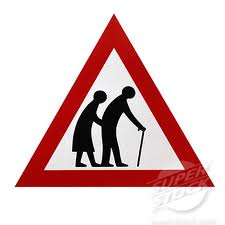The speed set by the Department for Transport in crossing a pedestrian is at 4 ft. (1.2 m) per second an international standard.
However, the present setting made by transport authorities on pedestrian crossing do not allow the elderly enough time to cross the road, a report warns.
The study found that for those over the age of 65, 76 percent of men and 85 percent of women have a walking speed slower than that needed to use a pedestrian crossing.
The issue, published in the journal Age and Aging, calls for current pedestrian times to be reviewed.
Base on the study, it has used walking speed tests from around 3,000 older adults performed by the Health Survey (HSE) for England in 2005.
The participant’s normal walking speed was assessed by timing how long it took them to walk 8 ft. (2.5 m) at their normal pace.
The average walking speed for older men was 3 ft. (0.9 m) per second and 2.6 ft. per second for older women.
On an average road, the green man signal light will stay lit for around 4 seconds. It then has a flashing or blackout stage for around 6 seconds. For roads more than 20 ft. (6 m) wide, an extra second is added for each additional 4 ft. (1.2 m).
After this there are an extra few seconds of an all-red light as a safety margin.
Dr. Laura Asher, report leader and public health expert at University College London said: “Having insufficient time at a road crossing may not increase the risk of pedestrian fatalities but it will certainly deter this group from even trying to cross the road.”
Peter Box, chair of the Local Government Association’s economy and transport board, said: “The formula councils use for timings at pedestrian crossings actually gives people far longer to cross the road than this flawed research suggests.
“Timings have to strike a balance between traffic flow and pedestrian safety, but the emphasis is always on safety.”
He said timings could be altered to take local circumstances into account, for example if there is a care home nearby.
Local transport minister Norman Baker said: “In my experience, the vast majority of people, young or old, get across the road as quickly as they can.
“The department recommends that where a crossing may be used by a large number of older people or those with mobility issues, for example outside residential care homes, this should be taken into account in the timings set by local authorities.”
To help pedestrians cross the road, Transport for London had been introducing “pedestrian countdown” technology to the capital.
This aims to help those crossing the road to be able to better judge whether they have enough time to do so safely.
